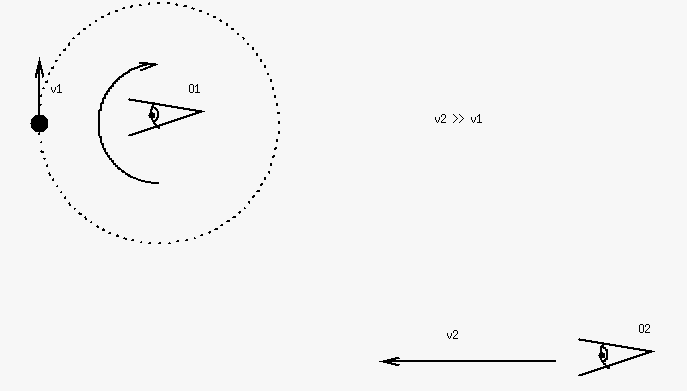Apparently a bunch of people totally misunderstood my previous question and choose to ignore the clarifying comments. Let me change the conditions to remove all the confusion.
A group of particles forming a circle of uniform density is moving in a circular path (following that circle shape), at a moderate speed $v_1$ (as observed from a frame of reference bound to the center of the circular path, O1). Let's say this is a cloud of ions filling a cyclotron that had accelerated them to 0.2c and then just maintains their circular trajectory with magnetic field without accelerating them any further. (depicted is momentary speed vector of one of these particles)n accelerator.
An observer (O2) moving at $v_2$ near speed of light (say, 0.9c relative to the previous observer (O1) / the cyclotron) observes the positions and movement of these particles. How will they appear from that observer's point of view - what is their apparent their trajectory and how does their density vary from that observer's point of view?


